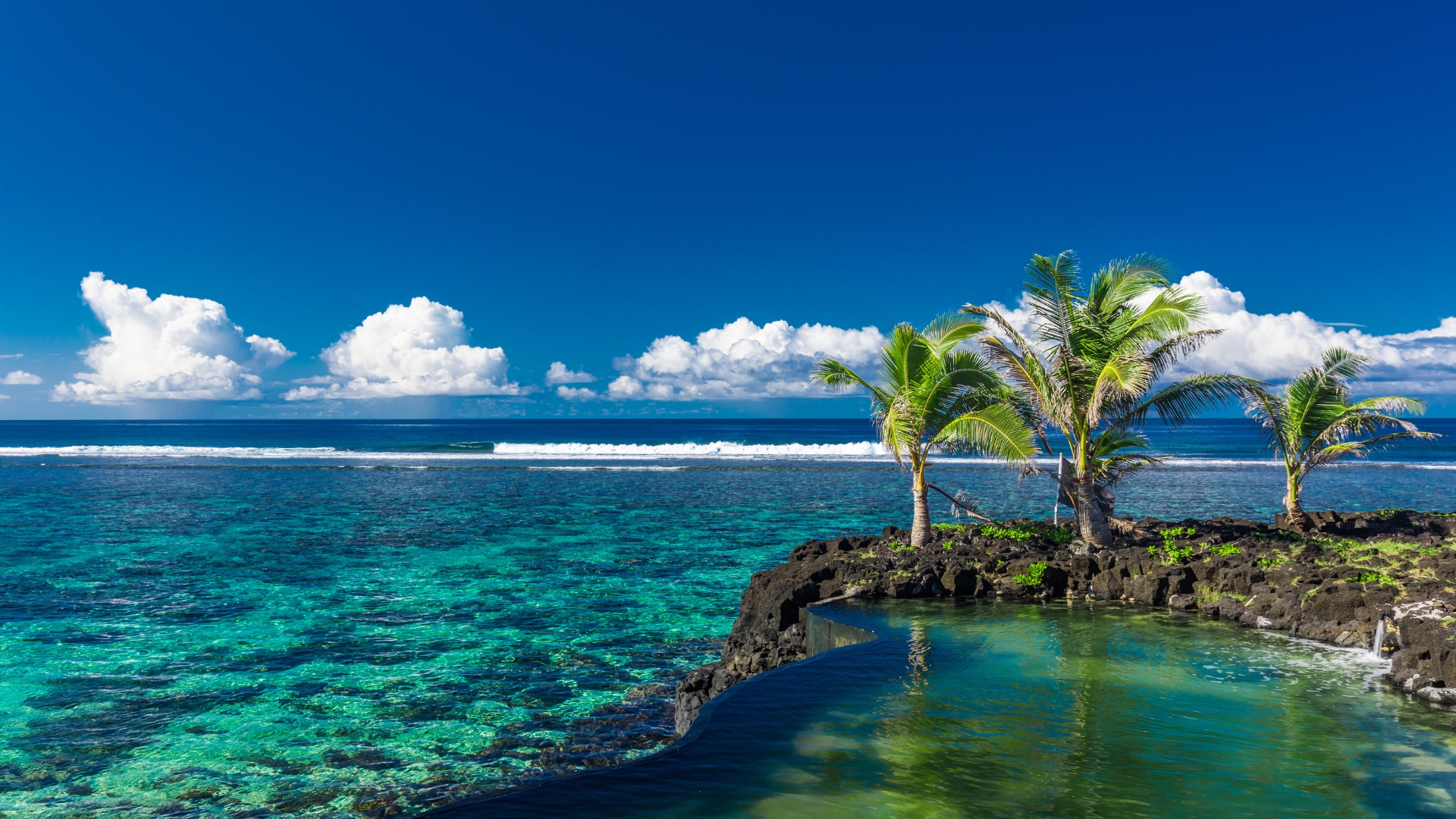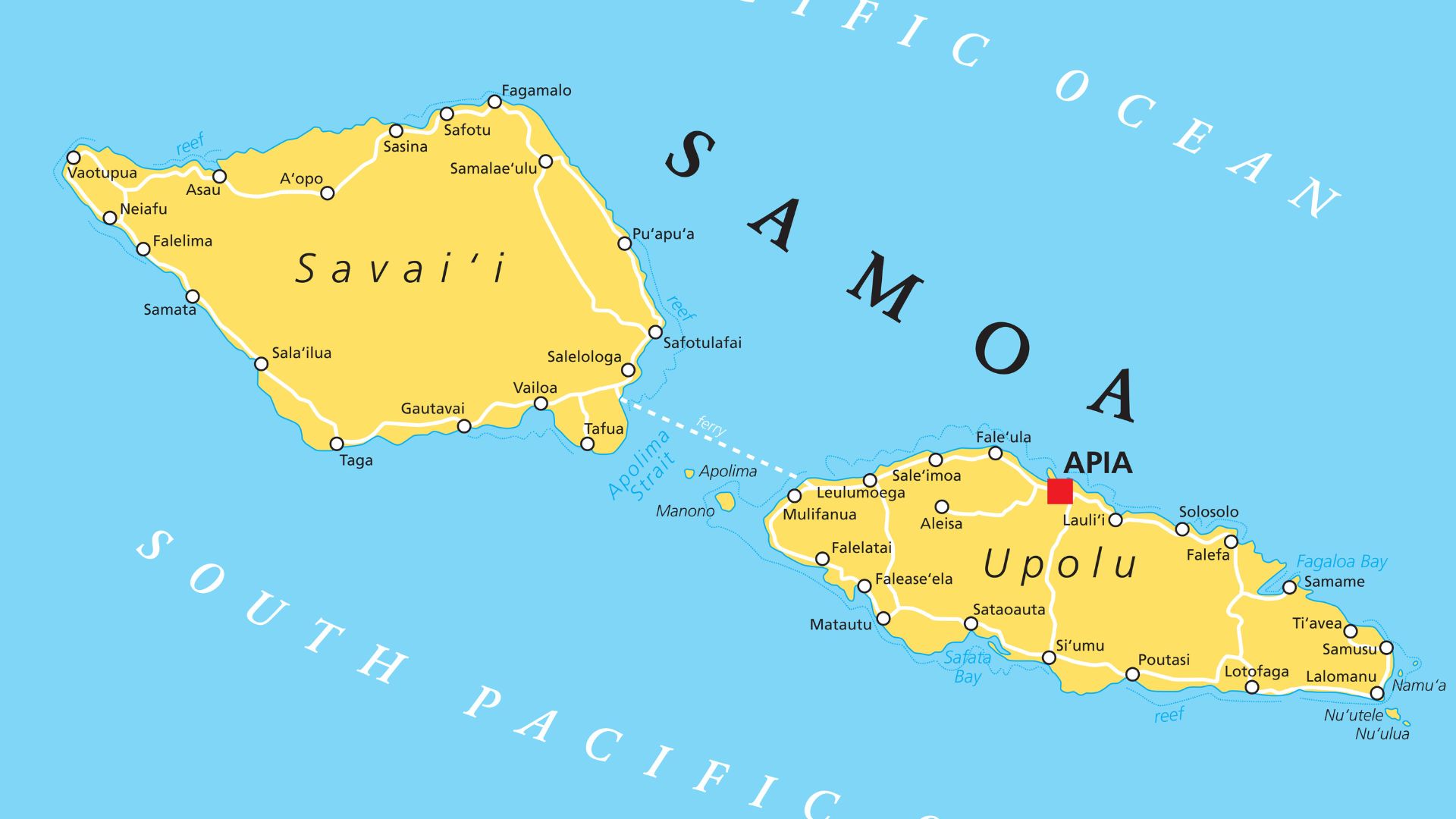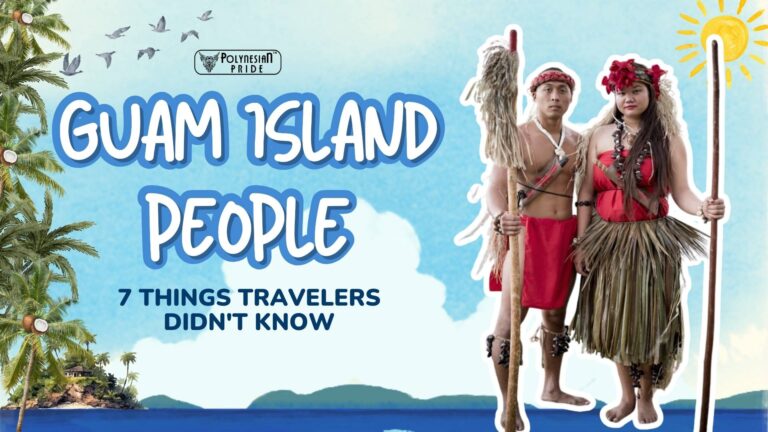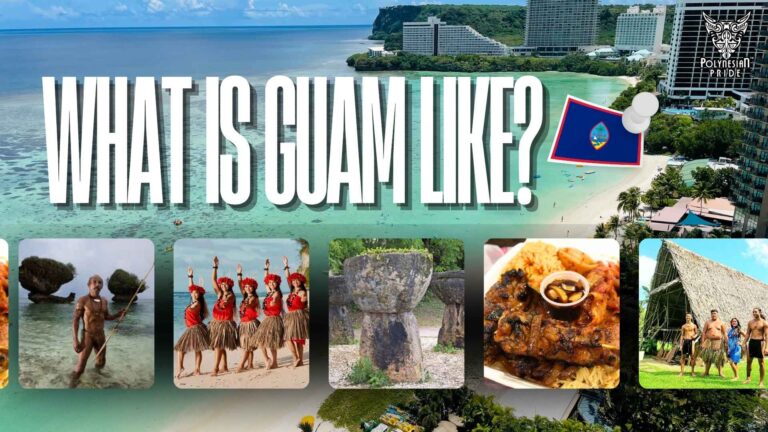Samoa Discovering: Scouting the Hidden Paradise of the Pacific Islands

Introduction
Samoa, the “Cradle of Polynesia” is the ancestral homeland of the Polynesians. Join us to explore an unforgettable South Pacific experience.

Geography
Location and Size
Samoa lies approximately 1,800 miles northeast of New Zealand and 2,600 miles southwest of Hawaii. It shares the Samoan archipelago with American Samoa and consists of nine islands.
The inhabited islands include:
- Upolu
- Savai’i
- Manono
- Apolima
- While Fanuatapu, Namu’a, Nu’utele, Nu’ulua, and Nu’usafee are uninhabited.
The largest island is Savai’i, while the second is the capital and city of Upolu, named Apia.
With a population of approximately 206,000, this land sees more citizens residing overseas. Found in New Zealand, Australia, and the United States, these expatriates remain deeply connected to their homeland’s beauty and culture, bridging their essence with the rest of the world.

Archipelago Formation
With its two main islands, Upolu and Savai’i, Samoa offers a diverse landscape shaped by volcanic activity. Savai’i, the largest island, boasts impressive volcanic features like Mount Silisili, which reaches 1,858 meters (6,096 feet) above sea level.
The islands’ volcanic origins also create dramatic coastlines, lush rainforests, and underground lava tubes, attracting adventurous travelers to this natural playground.

Flora and Fauna
One of many interesting facts about Samoa is its title “The heart of the Pacific Islands”. This country stands as a biodiversity hotspot in the South Pacific, boasting a rich plant and animal life tapestry.
Its ecosystem encompasses five distinct plant communities, ranging from lush rainforests to volcanic scrublands. It boasts over 500 native flowering plants and 220 species of ferns, many of which exist exclusively within its borders.
Additionally, the archipelago is home to diverse wildlife, including terrestrial mammals, land and seabirds, reptiles, insects, land snails, and fish.

Where Dodo Bird Relatives Reside
The Tooth-billed Pigeon, esteemed as Samoa’s national bird, is this island’s most prominent avian inhabitant. Sharing genetic parallels with the extinct Dodo and lacking close living relatives, it holds a unique place in avian history. Bird enthusiasts must visit these islands to witness this magnificent creature.

Historical Journey
Polynesian settlement: First Inhabitants

Polynesians arrived in the Navigator Islands around 1000 BCE, evidenced by the discovery of Lapita pottery shards in Mulifanua Lagoon on Upolu. Linguistic similarities suggest Samoan languages likely originated from Tonga. Local pottery production ceased around AD 200, indicating Samoa’s importance in the settlement of eastern Polynesia.
The locals excelled in navigation, boatbuilding, and fishing, with maritime activities deeply ingrained in their society. Agriculture thrived, cultivating crops like yams, taro, breadfruit, bananas, sugarcane, and coconuts. Most Samoans resided in villages governed by councils of matai (chiefs), while many fortified villages, each comprising 30 or more houses, emerged along the coast.
The German Colonization Era
In contrast to neighboring South Pacific nations colonized by Britain and France, Samoa’s colonial legacy lies with Germany. Amidst contention among Germany, Britain, and the U.S. for dominance, the Tripartite Treaty resolved disputes, awarding the Western country to the Germans and the Eastern to the Americans. This place’s distinctive historical path of Samoa sets apart its past and shapes its cultural scenery.

Journey to Independence: A Historic Milestone
Despite delays from the Great Depression and World War Two, New Zealand’s control over this country eased after the war, allowing Western Samoa to become a United Nations Trust Territory under New Zealand’s administration.
In January 1961, a proposal for Samoan independence was presented to the United Nations, leading to a referendum on January 1, 1962, in which Western Samoans overwhelmingly voted for independence.
As a result, the Western Part gained independence on January 1, 1962, under Prime Minister Fiame Mata’afa. From 1962 to 1997, the nation was known as “Western Samoa”, explaining the currency abbreviation “WSD” and the “.ws” domain. In 1997, the name was officially changed to “Samoa”, marking a new chapter in its history.

Culture
Are Samoans and Hawaiians the same?
Samoans come from the Samoan Islands, split into the Independent State and American Samoa, a U.S. territory. Their culture, steeped in traditions like Fa’a, prioritizes community, family, and elder respect. The Samoan language is integral to their identity, and customs and practices are handed down through generations.
Hawaiians originate from the Hawaiian Islands, now part of the United States. Their culture, rooted in ancient Polynesian traditions, includes hula dancing, chants, and the Hawaiian language, one of the state’s official languages. Hawai’i had a monarchy era before becoming a U.S. state in 1959.
Despite shared ancestry, geographical separation has built Samoan culture and Hawaiian culture differently. Both cultures remain proud and vibrant within the Polynesian family.

Read more about Hawaiian: 10+ Interesting Facts About Hawaii Islands That You May Not Know
Cultural Specialties
The Essence of Fa’a Samoa
Fa’a Samoa, which means “The Samoan Way” in the beautiful local language, represents the culture and traditions that influence the daily lives of Samoans. At its core is ‘aiga’, meaning family, which encompasses not only immediate relatives but also extended family and the wider community. Their culture places great importance on maintaining strong family and community connections.
A vital aspect of this culture is the Fa’amatai system, a collectivist form of governance. In this system, family and village leaders, known as Matais, are expected to be selfless, putting the community’s and family’s needs above their own. People highly respect these leaders for their service.
Although this traditional structure has evolved, the values of service and community remain central. Samoans are known for their warm smiles and friendly personalities, welcoming and accepting everyone they meet. Hospitality, cooperation, respect, and consensus are highly valued in the country’s culture, reflecting the enduring spirit of Fa’a Samoa.

Traditional Tatoo
Tattooing, or tatau, is deeply rooted in ancient tradition, symbolizing status and cultural identity. Historically, only chiefs and their assistants from prominent families underwent elaborate tattooing ceremonies, marking their transition to leadership roles. Tatau was introduced to this land by two Fiji women, and despite initial resistance, it became a cherished tradition passed down through generations.
The intricate designs of the pe’a for men and the malu for women hold significant cultural meaning, representing community, power, and honor. Tatau sessions, led by skilled artists known as Tafuga, are rigorous and painful, often spanning weeks or months to complete. While men endure the extensive pe’a design covering their bodies from waist to knee, women receive the delicate malu from upper thighs to below the knees. During tattooing, apprentices and helpers assist the Tafuga, while women sing to alleviate pain. Tatau remains a revered aspect of Samoan culture, embodying tradition, identity, and resilience.

Events and Festivals
Samoan culture bursts with vibrant festivals, offering colorful rituals, music, and feasting:
Teuila Festival
The Teuila Festival celebrates all things! Named after the national flower, the vibrant red ginger, it features diverse dance competitions, traditional arts, tattooing, and delicious food. The festival ends with the Miss Samoa Pageant crowning the winner. Every September, the Teuila festival begins and lasts a week. This event offers communities, villages, and church congregations the chance to participate in traditional dance and music competitions, showcasing their talents.

Samoana Jazz & Arts Festival
The Samoana Jazz & Arts Festival annually symbolizes unity, culture, and language while drawing participants worldwide. Held in Apia City every September, the festival presents vibrant jazz music across multiple venues, attracting local and international musicians and enthusiasts to this exceptional event in Navigator Islands.

Apia Arts and Crafts Festival
The Apia Arts and Crafts Fair showcases local talent and traditional handicrafts from the nine islands. Artists primarily base their work on traditional forms such as tatau, siapo, lavalava, and weaving. Samoan women weave ‘ie sae mats, cultural currency in ritual exchanges. Plant fibers come from various pandanus species cultivated by the weavers. Held in March, visitors can best experience the fair by exploring Apia’s local markets.

Palolo Festival
The Palolo Festival celebrates the consumption of the Palola viridis, or palolo worm, abundant in the south-central Pacific. Held annually from October 7 to 12th, this event coincides with the peak palolo harvest, often accompanied by light rain. The locals eagerly await the palolo to surface along the shoreline, using nets for collection. Midnight palolo fishing is a beloved tradition, with locals often skipping work the next day.

Unique Things to Do
Top Places to Visit
To-Sua Ocean Trench
Just an hour’s drive from Apia lies the village of Lotofaga, home to the breathtaking To-Sua Ocean Trench. This natural swimming long ladder leads to a platform for easy entry into the pool, plunging 30 meters deep. Skilled divers can explore a cave that connects to the open sea. The trench’s crystal-clear turquoise waters make it a popular spot for swimming and snorkeling, open year-round. Showers are brief, and visitors from September to November might even catch a glimpse of nearby whales. The entrance fee is 20 $ S.T. for adults and 10 $ S.T. for children aged 6-11.

Fuipisia Waterfall
In Lotofaga on Upolu Island, Fuipisia Falls is a majestic 55-meter-high jungle waterfall. Visitors can admire the falls as they cascade into a deep pool or experience the exhilaration of bathing while enjoying a panoramic view from the top. The area offers excellent opportunities for birdwatching, photography, and relaxation on the clifftops. The best time to visit is during the rainy season. Admission fees are $10.00 for adults, $5.00 for children aged 10-12, and $2.00 for children under 10.

Piula Cave Pool
Located in Lufilufi, within the political district of Atua, Piula Cave Pool is just 26 km east of the capital, Apia, accessible via the picturesque coastal road. This natural wonder comprises two blue-green, fish-filled freshwater grottoes just meters from the sea. Brave swimmers can navigate between them through a challenging 3-meter underwater passage shrouded in darkness. Despite its proximity to the shoreline, visitors are enchanted by the refreshing coolness of the cave’s water. Both tourists and locals flock to dive into the Fatumea Cave Pool of Piula Theological College. The cave pool welcomes visitors from Monday to Saturday, operating from 8 am to 4 pm (closed on Sundays). Admission fees are $5 for adults and $3 for children.

Lalomanu Beach
Lalomanu Beach, situated along the eastern coast of Upolu Island, is a favored spot for picnics, particularly on holidays. This stunning beach is renowned for its expansive stretch of white sand and picturesque tropical surroundings. For the ultimate Lalomanu experience, consider staying at one of the iconic beach fale accommodations. Falling asleep to the soothing sounds of gentle waves and waking up to a beach sunrise will make you feel like you’re in paradise. The optimal time to visit Lalomanu Beach is during the dry season, from May to October. During this period, the weather is warm and dry, with minimal rainfall. Additionally, the water is more transparent, providing ideal conditions for swimming and snorkeling.

Conclusion
Samoa shines as a true Pacific gem, offering an unmatched and authentic experience. Whether seeking adventure, relaxation, or cultural immersion, Samoa captivates every traveler and promises unforgettable experiences.
Frequently Asked Questions (FAQs)
What is the best time of year to visit Samoa?
The best time to visit is generally during the dry season, which runs from May to October. This period offers more stable weather, with lower rainfall and reduced risk of cyclones.
How long should I plan to stay in Samoa?
The ideal length of stay depends on your interests and the pace of your travel. Spend a minimum of 7-10 days exploring the main islands of Upolu and Savai’i, while 2 weeks or more allows for a more thorough experience and the chance to visit some of the smaller islands.
What is the currency used in Samoa?
The official currency is the Samoan tala (WST). Major credit cards are accepted at most hotels, restaurants, and larger establishments, but carrying some cash for smaller transactions and local markets is recommended.
What are the entry requirements for Samoa?
Most visitors need a valid passport and a tourist visa, which they can acquire upon arrival or online in advance. It’s essential to check the current visa requirements before your trip.
What are some typical Samoan dishes I should try?
Some must-try dishes include umu (earth oven-cooked food), palusami (taro leaves cooked in coconut cream), and fattened suckling pig.

I am Leilani Miller – I research focusing on Vanuatu – volcanic landscapes, blue holes, coral reefs & rainforests. I have over five years of experience researching and sharing insights on tourism and environmental activism. Explore and experience without limits through my latest article.
Contact information:
Email: [email protected]
Tel: +1 (808) 555-1528






